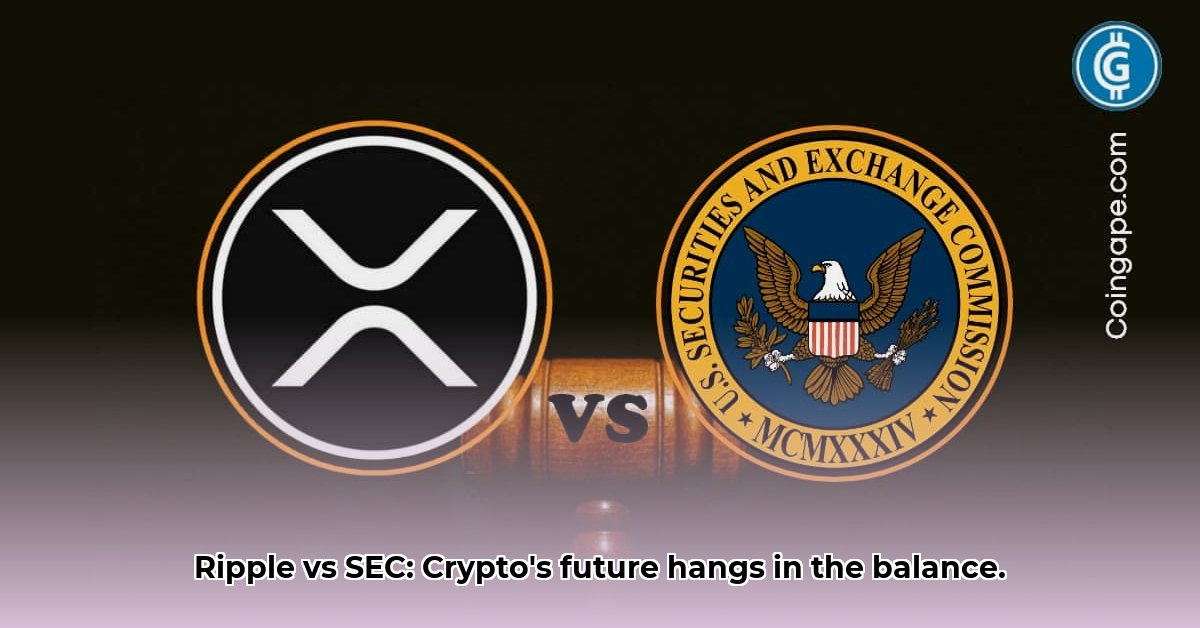
Ripple and SEC: A Defining Moment for Crypto
The conclusion of the protracted legal battle between Ripple Labs and the Securities and Exchange Commission (SEC) represents a watershed moment for the cryptocurrency industry. While a partial victory for Ripple, the case's ramifications extend far beyond the fate of XRP (a cryptocurrency), shaping the future of cryptocurrency regulation in the United States and globally. The judge's decision, while initially favorable to Ripple, has been partially challenged and faces ongoing legal proceedings, highlighting the complexities of applying established legal frameworks to nascent technologies. This lack of clarity underscores the urgent need for comprehensive regulatory frameworks tailored to the digital asset landscape.
Understanding the Core Conflict
The central issue in Ripple Labs Inc. v. Securities and Exchange Commission hinged on the interpretation of the Howey Test, a 1946 legal standard used to determine whether an offering constitutes an "investment contract" and therefore a security subject to registration requirements. The SEC argued that Ripple's sales of XRP constituted unregistered securities offerings, claiming investors purchased XRP with a reasonable expectation of profit derived from Ripple's efforts. Ripple countered by arguing that many of its XRP sales did not meet the Howey Test criteria, emphasizing the decentralized nature of XRP and its distinct use cases beyond investment.
The differing interpretations of the Howey Test, specifically concerning the role of decentralization in determining the investment nature of a cryptocurrency, form the crux of the disagreement. This uncertainty prompts a critical question: Does decentralization alone exempt a cryptocurrency from securities laws? The absence of a definitive answer creates considerable uncertainty for the entire crypto industry. Furthermore, some observers note perceived inconsistencies in the SEC's approach to cryptocurrency regulation, further compounding the confusion. This inconsistency highlights the need for clearer, more consistent regulatory guidelines.
What the Ripple-SEC Case Means for Crypto
The implications of the Ripple-SEC case are far-reaching. The uncertainty surrounding the legal status of XRP led some cryptocurrency exchanges, such as Coinbase, to temporarily suspend XRP trading, demonstrating the immediate impact of regulatory ambiguity on market operations. The final judgment in this case will profoundly impact how other crypto projects structure their token sales and navigate regulatory compliance. This naturally leads to a critical question for everyday investors: What does this mean for the safety of their investments?
The Ripple-SEC ruling impacts far more than just XRP. The ripple effect (pun intended) is already being felt across the entire crypto ecosystem. The lack of clear regulatory guidelines creates significant uncertainty, which could potentially stifle innovation, reduce investment, and cause crypto projects to relocate to jurisdictions with more lenient regulatory environments. This situation highlights the vital role of regulatory clarity in fostering a healthy and sustainable crypto market.
Looking Ahead: Navigating the Uncertain Future
The ongoing appeals process necessitates a strategic approach from all stakeholders. The need for proactive steps from investors, platforms, and lawmakers is clear.
Key Stakeholder Actions:
- Cryptocurrency Exchanges: Enhance compliance procedures; refine crypto listing criteria; actively collaborate with regulators.
- Cryptocurrency Projects: Scrutinize tokenomics; engage with regulators proactively; implement robust decentralized governance models; strategize for diverse jurisdictional regulatory landscapes.
- Investors: Diversify portfolios; remain informed about regulatory developments; conduct thorough due diligence before investments.
- SEC: Re-evaluate enforcement strategies; clarify regulatory guidelines; develop a comprehensive regulatory framework for digital assets.
- Congress: Enact crypto-specific legislation; consult with industry stakeholders to create effective, balanced regulations.
How to Mitigate Regulatory Risks for Crypto Projects Post-Ripple SEC Lawsuit
The Ripple-SEC case serves as a stark reminder of the complexities inherent in navigating the regulatory landscape for crypto projects. The ruling highlighted the critical need for proactive risk management and a deep understanding of securities laws applicable to digital assets. The following steps outline a practical approach to mitigating these risks.
Key Strategies for Mitigating Risk:
Token Classification: Conduct a thorough legal analysis to ensure your token does not meet the Howey Test criteria for a security. Consult with experienced legal counsel specializing in securities law and blockchain technology.
Distribution Strategy: Carefully plan your token distribution strategy to minimize regulatory risks. Consider alternatives to traditional token sales, such as airdrops or community-driven initiatives, to reduce scrutiny.
Legal Counsel: Engage legal counsel early in the project lifecycle to incorporate regulatory compliance from the outset, rather than retroactively. This proactive approach can significantly reduce future liability.
Transparency and Disclosure: Maintain complete transparency about your token's purpose, utility, and distribution mechanisms. Openly communicate your regulatory strategy to investors and the broader community.
Jurisdictional Differences: Acknowledge the varying regulatory landscapes across jurisdictions. Develop tailored strategies for different regions, given the considerable differences in regulatory approaches.
Compliance and Audits: Regular independent compliance audits can help identify potential vulnerabilities in your regulatory posture. These audits demonstrate your commitment to compliance, boosting investor confidence and mitigating enforcement risks.
The Ripple-SEC case represents a pivotal moment in the evolution of cryptocurrency regulation. While the ultimate outcome remains to be seen, proactive compliance and a meticulous approach to risk management are crucial for navigating this ever-evolving legal landscape. The future of crypto hinges on a collaborative effort between industry stakeholders and regulators to create a clear, transparent, and effective regulatory framework.